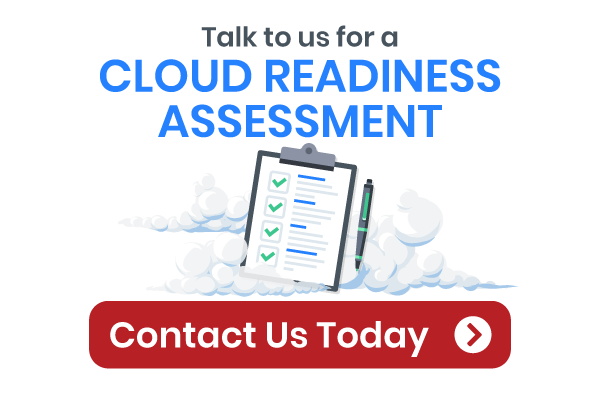
As Isos Technology’s Global Account Director, Sandip Patel is one of the first people at Isos Technology that companies talk to when they’re considering a migration to Atlassian Cloud. Sandip helps companies understand what the overall impact of a migration might be to their organization.
We recently sat down with Sandip and asked him what questions customers ask about migrating to Atlassian Cloud—and what the answers are, of course!
1. Why are so many organizations migrating to Atlassian Cloud?
There are a few trends converging to drive more companies to make the move to Atlassian Cloud. At a high level, every organization is looking at business agility to get better quality products to market faster. Putting the right tools in place is an important part of that. Add to it that Atlassian has been making big investments in Cloud—they’re constantly innovating and evolving the functionality, so it's increasingly more powerful, more flexible, and easier to use.
Practically speaking, with Atlassian ending support for Server on February 15, 2024, more companies are making the transition now, so they’ll be up and running on Cloud before that happens.
2. February 15, 2024, seems like a long way off. Why do companies need to start planning their Cloud migrations now? How long does it take?
Migrations are inherently complex, and involve a lot of stakeholders, so they take some time. Even the most straightforward migrations will take 6-8 weeks—longer if the instance is large. Many large, complex migrations can take up to 6-12 months! There shouldn’t be any mystery around the process though. Companies should look for an Atlassian Migration Partner that breaks down the steps and timeline, communicates clearly with them what needs to happen when, and how long it will take.
3. Why do companies need an Atlassian Migration Partner? Can they go it alone?
Migrations involve a level of complexity and risk that means companies usually need a partner. Even companies with experienced Atlassian admin teams will likely not have specific expertise in migrations. Atlassian Migration Partners are familiar with all the variables and potential pitfalls, and may even have developed proprietary tools to get the job done.
Plus, there’s just a lot of risk involved in migrations. Sometimes companies try to do it on their own, and something goes awry, and both their source instance and new Cloud instance are down, and work comes to a halt. Or worse yet—they might lose critical data.
4. A lot of companies offer Atlassian migration services. What makes Isos Technology stand out?
One of the main reasons customers choose to work with Isos is our attention to detail every step of the way, whether that’s helping them understand what the financial impact will be over the course of several years, breaking down the process for them so they know what to expect, architecting a solution that will serve them well into the future, or making sure every bit of necessary data is moved to the new instance.
Isos has handled some of Atlassian’s largest, most complex merges and migrations, but we do a lot of smaller migrations, too, so regardless of company size, we have a ton of experience in the space and can figure out the best solution for any scenario.
5. Thinking about costs—how can Isos help customers understand what the financial impact will be to their company?
As part of the estimation process, Isos makes it a practice to provide customers with a Total Cost of Ownership (TCO) analysis. Often, when a company does a cost/benefit analysis, they only look at the hard costs of the software, but there’s a lot more to it than that. In our TCO analysis, we take a long view of the migration across multiple years, and factor in things like hardware costs, hosting fees, and even internal resources. In some cases, companies have teams of FTEs managing their instance and servers, and by making the transition to Cloud, those resources can be redirected toward other business objectives.
6. Does Isos approach all migrations the same way?
While we do have a proprietary process that we follow to make sure we cover every variable, no two migrations are ever the same. Each one requires a different strategy and level of effort: some companies may need full, end-to-end support that involves architecting a solution, working through security, planning around apps, handling communications, training users, and so on. Other companies have their staff handle some of those components, while Isos handles the actual data migration.
7. What is a challenge that companies might overlook in Cloud migrations and how can Isos help?
Given the sheer number of teams and people who need to be involved in Cloud migrations, communicating with everyone can add to the complexity of a migration. Isos is great at identifying all the stakeholders beyond IT, bringing them in at the right time in the process, and ensuring transparency is there from the get-go. It starts with procurement—it’s important for companies to understand how their costs are going to shift and what the financial advantages are over time. Another team that needs to be brought into discussions early on is IT security—they need time to evaluate the solution and ensure it meets any security requirements the company has in place.
8. What’s your favorite thing about working at Isos?
I can think of a few things! First, it’s the camaraderie of the team. It’s hard for me to find the words to describe how supportive our team is, whether I’m trying to figure something out and need help getting past a certain point, or in critical situations. And people reach out proactively—they don’t wait until you ask for help. That level of teamwork can’t be beat. I also appreciate how everyone is always looking for ways to keep improving, whether that’s focusing on new objectives or finding new tools to work more efficiently. At a lot of companies, the mantra is if it’s not broken, don’t fix it. At Isos, we’re always asking, how can we do things better?
Thanks, Sandip, for taking the time to answer our questions about migrating to Atlassian Cloud!
Sign up to receive more great content
Learn more about Atlassian and how Isos can help by signing up to receive our latest blogs, eBooks, whitepapers and more.














